New leadership, old rivers, and the long road to clean water

Of the 200 crore people around the world who lack access to safe drinking water, seven crore live in Bangladesh. That's 3.5 percent of the global population. In real terms, it means two out of every five people in this country rely on contaminated water.
Sanitation doesn't look any better. Forty-one percent of the population still doesn't have access to improved or basic sanitation. That's around seven crore people deprived of a basic human need, and constantly exposed to diseases, because they either don't know better or simply don't have access to anything better.
So, when we look at SDG 6—access to clean water and sanitation for all—it's no surprise that Bangladesh is way off track. With just five years left before 2030, Bangladesh's SDG tracker shows that, out of eight targets and 11 indicators, we're only likely to meet one: Indicator 6.1.1, "Proportion of population using safely managed drinking water services". That's under Target 6.1, which aims for universal and equitable access to safe and affordable drinking water for all. Reality? Very different.
And I say "it's no surprise" because Bangladesh officially pledged to achieve the SDGs in 2015, when the UN member-states adopted the agenda. On paper, things looked okay. Rivers were declared as "living entities" (like in five other countries), monitoring bodies like the National River Conservation Commission (NRCC) were set up to track river health, a cluster of regulatory bodies were formed, and even the former prime minister herself was put in charge of the National Water Resource Council. This council was supposed to meet annually, review reports, and coordinate action. Guess how many times they met? Zero.
As of 2022, if you went to the Ministry of Water Resources or the NRCC, you wouldn't find updated databases or credible reporting on river conditions. Even in 2025, we still don't know how many rivers are intact.
What we do know is that Sheikh Hasina's government turned the whole system into a playground for syndicates. I spent two years reporting on rivers, and I can tell you most of the big stories weren't about solutions. They were about river dredging cartels selling sand to buyers with no names and no faces, pollution that no one was being held accountable for, floods, neglected communities, no awareness, no manpower, no drive to engage the people most affected—basically, the lack of everything.
Here's what surprised me, though. Usually, it's the people at the top eating the biggest slices of the cake. But when it came to looting public resources, the rot started from the bottom. Union parishad members, chairmen, and local muscle (many too dangerous to name) were cashing in. During the dry season, they'd create land out of embankments, blocking river flow, messing with navigation, and flooding low-lying areas.
When I asked an NRCC official how often the ministries sit for meetings, he said, "Barely, but they do sit." I asked why the minutes weren't uploaded to the website, he pointed to a lack of manpower. Then he paused and asked if what he was saying would be published. After I assured him it wouldn't, he sighed in relief, "Because we can't disclose how things operate. Especially in light of recent events." That "recent event" was the sudden removal of Dr Manjur Ahmed Chowdhury from his post as NRCC chairman. His termination came barely three weeks after he publicly criticised "a female minister from Chandpur." It was an unceremonious end to what was a brief but fierce tenure—one where, for once, someone dared to challenge powerful people for their alleged role in environmental damage. A rare exception in a long line of otherwise pliant former bureaucrats who usually lead these bodies.
The Bangladesh Inland Water Transport Authority (BIWTA) official I spoke to carried the same weight of caution, careful with every word he said. But one thing stood out. The government only owned 15 dredgers, despite the ministry getting an annual budget in crores. Suddenly, it made sense why private companies get these dredging contracts, and then dredge wherever, however deep, for however long they please. No oversight. No accountability. No concern for communities. Just business.
These conversations made something painfully clear: the lack of freedom of speech has choked even the most basic forms of transparency. You can't even ask simple questions—like whether people are doing their jobs, whether meetings are happening, whether data is being tracked—without stepping on toes.
Thankfully though, we're now in the hands of someone capable. Adviser Syeda Rizwana Hasan, a woman on a mission, has taken on the mammoth task of showing the youth of Bangladesh what clean, pollution-free rivers look like. This is a journey I'm personally excited for.
Back in September, she pledged to clean up eight rivers in eight districts. But on February 11, she announced that the government had initiated a working plan to clean four major rivers surrounding the capital: Buriganga, Turag, Balu, and Shitalakkhya. Just days earlier, on February 2, in a step towards restoring Dhaka's waterways, three advisers of the interim government inaugurated excavation work in six canals. The project aims to improve water flow, combat pollution, and reclaim the canals from decades of neglect. These are essential moves, both environmentally and urbanly.
Besides this, the initial work of the long-awaited Teesta River project has finally resumed, bringing renewed hope to the communities living along its banks. If implemented well, the project will curb bank erosion, reclaim land, and store floodwater for use during the dry season.
If one takes a closer look, they'll notice how each of these moves directly addresses the indicators of SDG 6. If given five more years, at this rate, the environment adviser might meet her original goal—maybe not just eight rivers, but more. Only time will tell.
The only qualm I have with the current efforts, and one that could perhaps accelerate river cleanups even further, is the lack of community involvement and innovative approaches. Recently, Bangladesh sought US assistance for the restoration of the Buriganga River. But what would help more is collaboration with independent organisations. For example, River Cleanup, a Belgium-based international non-profit, structures its work around the theory of change and actively involves local communities while building awareness of plastic pollution. Or take the Seabin, an innovation by an Australian start-up that helps collect garbage before it enters the ocean. These are short-term solutions, but effective. If innovation is truly sought, it will be found. And if help is asked for, it should be specific and directed at organisations that can help solve our river problems in tangible ways.
This is not to say that we are not moving in the right direction; we are. This is just to say that the movement can grow louder—from a cautious step to a collective roar, one where communities care for rivers again and become part of the change. If anything, I'm just glad that we've gone from having no meetings to finding meeting minutes available on ministry websites.
The times, they are a-changin'. Thank goodness.
Nazifa Raidah is a journalist, researcher, and development practitioner. She can be reached at [email protected].
Views expressed in this article are the author's own.
Follow The Daily Star Opinion on Facebook for the latest opinions, commentaries and analyses by experts and professionals. To contribute your article or letter to The Daily Star Opinion, see our guidelines for submission.
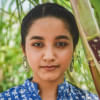
 For all latest news, follow The Daily Star's Google News channel.
For all latest news, follow The Daily Star's Google News channel. 



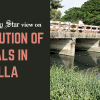
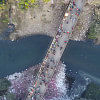

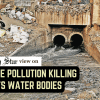


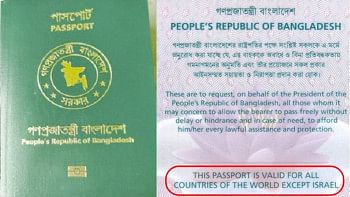
Comments